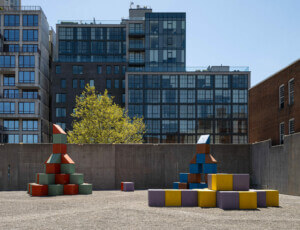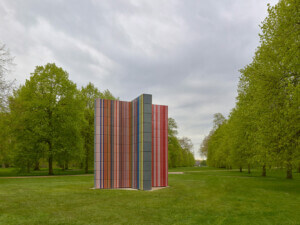Overlooking the Art Institute of Chicago’s historic grand staircase, Architectural Fragments From Chicago is a new installation by curator Alison Fisher. The permanent exhibition at the 1879 edifice by Shepley, Rutan and Coolidge brings together signature works and new acquisitions from the museum’s permanent collection. Custom-designed objects by luminaries like Frank Lloyd Wright, Marion Mahony Griffin, Walter T. Bailey, Louis Sullivan, and Dankmar Adler each amass under the sunlit atrium.
The exhibition itself is designed by Chicago firm Norman Kelley with Spencer McNeil. It’s divided into six sections dedicated to the histories of local buildings, architects, and inhabitants. Displays reveal new research on Frank Lloyd Wright and Louis Sullivan that illuminate the social milieu the famed architects operated in.
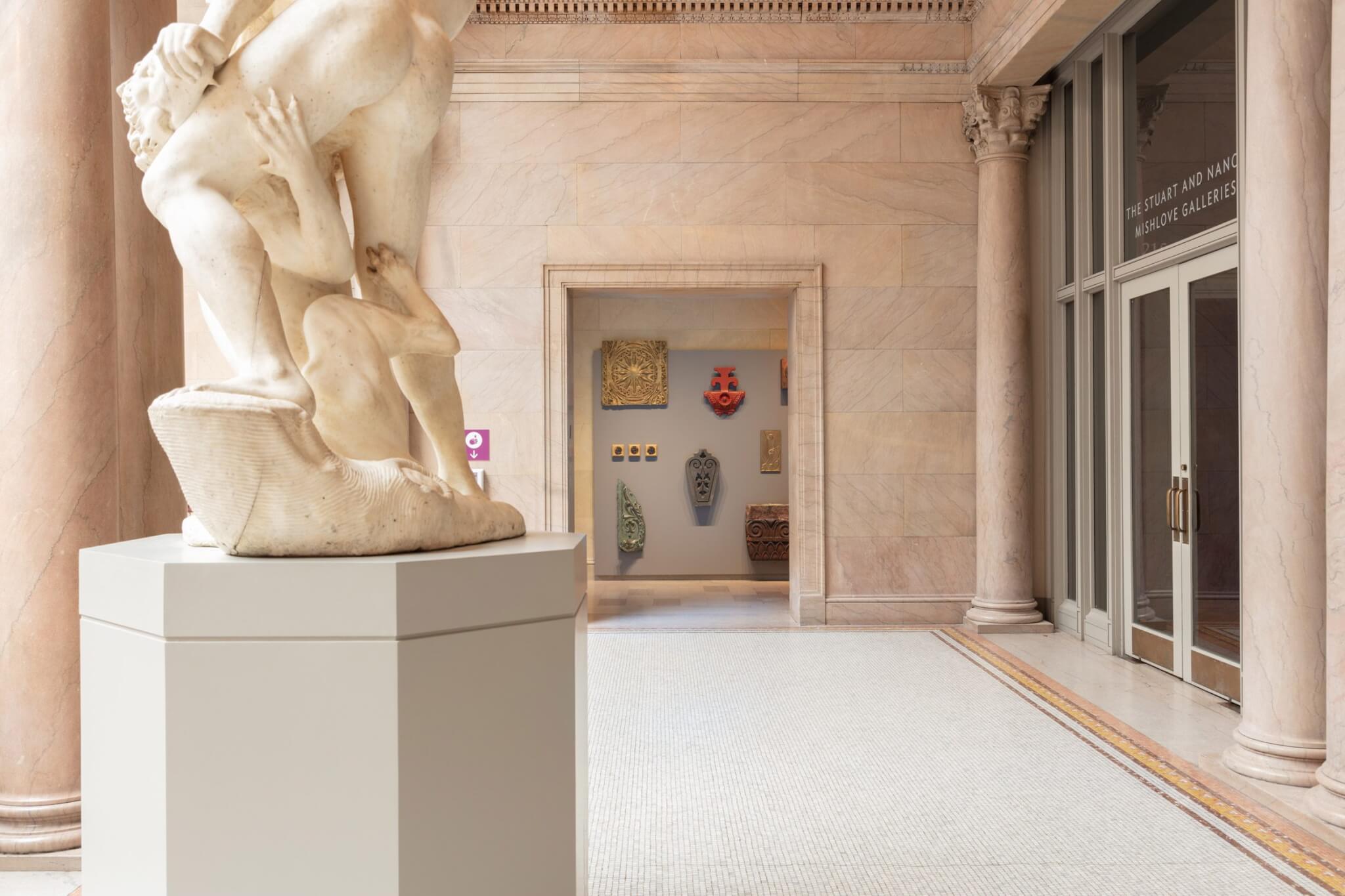
At Architectural Fragments From Chicago, other spaces focus on the South Side neighborhood of Bronzeville, and labor movements in the city. This is meant to challenge viewers to try and forge connections between architectural production in the early twentieth century and Chicago’s social justice struggles, according to the curators.
“From stockyards and steel plants to housing for workers, the architectural history of labor in Chicago has shaped the city’s built environment,” Alison Fisher said in a project statement. “The fragments here offer snapshots from this history, such as the corbel, or roof bracket, from a workers cottage built in 1855—a time of tremendous growth for the city when many simple frame houses and brick tenements were constructed to house workers and their families,” Fisher continued.
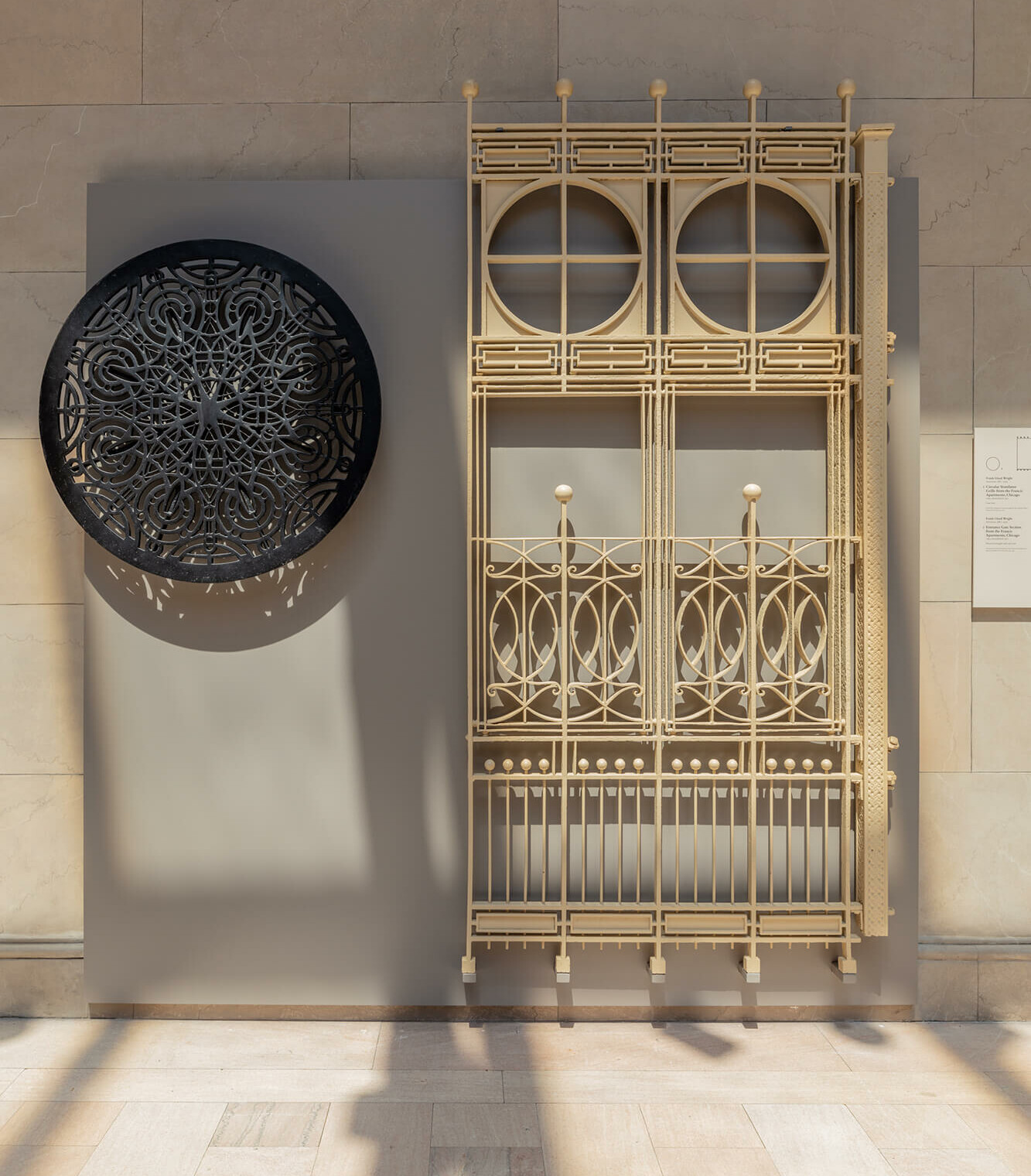
At Architectural Fragments From Chicago, an impressive circular ventilator grille from Chicago’s Francis Apartments custom designed by Frank Lloyd Wright takes center stage. So too does a spandrel panel from the Levi Rosenfeld Building (1882) custom designed by Louis Sullivan and Dankmar Adler. Demolished in 1958, custom designs by Sullivan and Adler from the Rosenfeld were kept for safe keeping at Southern Illinois University at Edwardsville; now on display for public view.
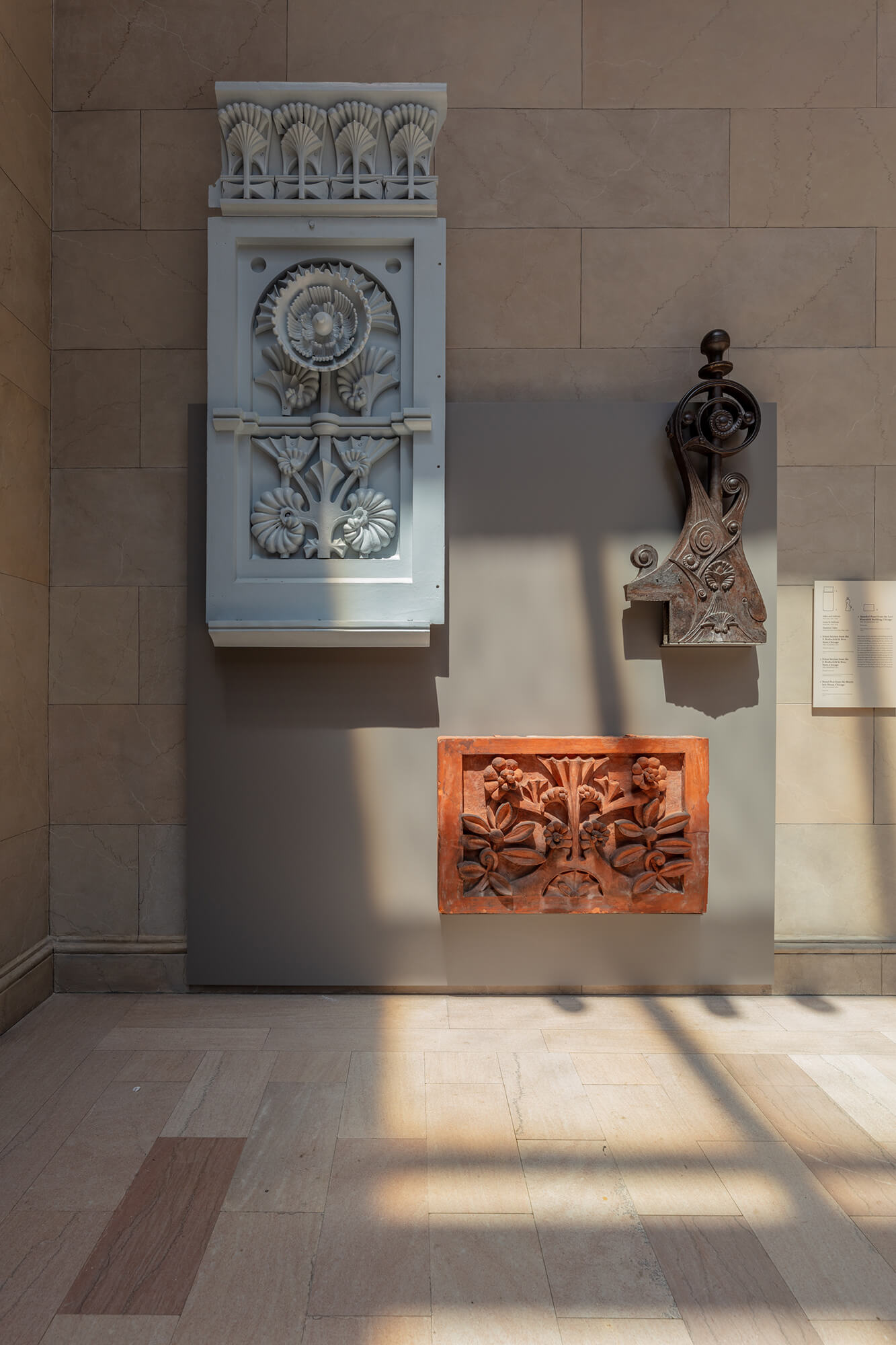
The installations dedicated to Wright and Sullivan appear next to informative stalls with work by Chicago designers like Walter T. Bailey, the first African American architect to be licensed in the state of Illinois. At the Art Institute, ornament by Bailey is on display from a 1928 building he designed in Bronzeville. Curators say Bailey’s iconography has poignant symbols of Black pride and power, namely the lotus flowers, sacred animals, and busts of pharaohs and queens.
A stunning stained glass piece by Prairie School architect Marion Mahony Griffin is located not far from the Wright and Sullivan ephemera. An elevator grille from Chicago’s Manhattan Building designed by William LeBaron Jenney and William B. Mundie is located close to a window designed by Edgar Miller.
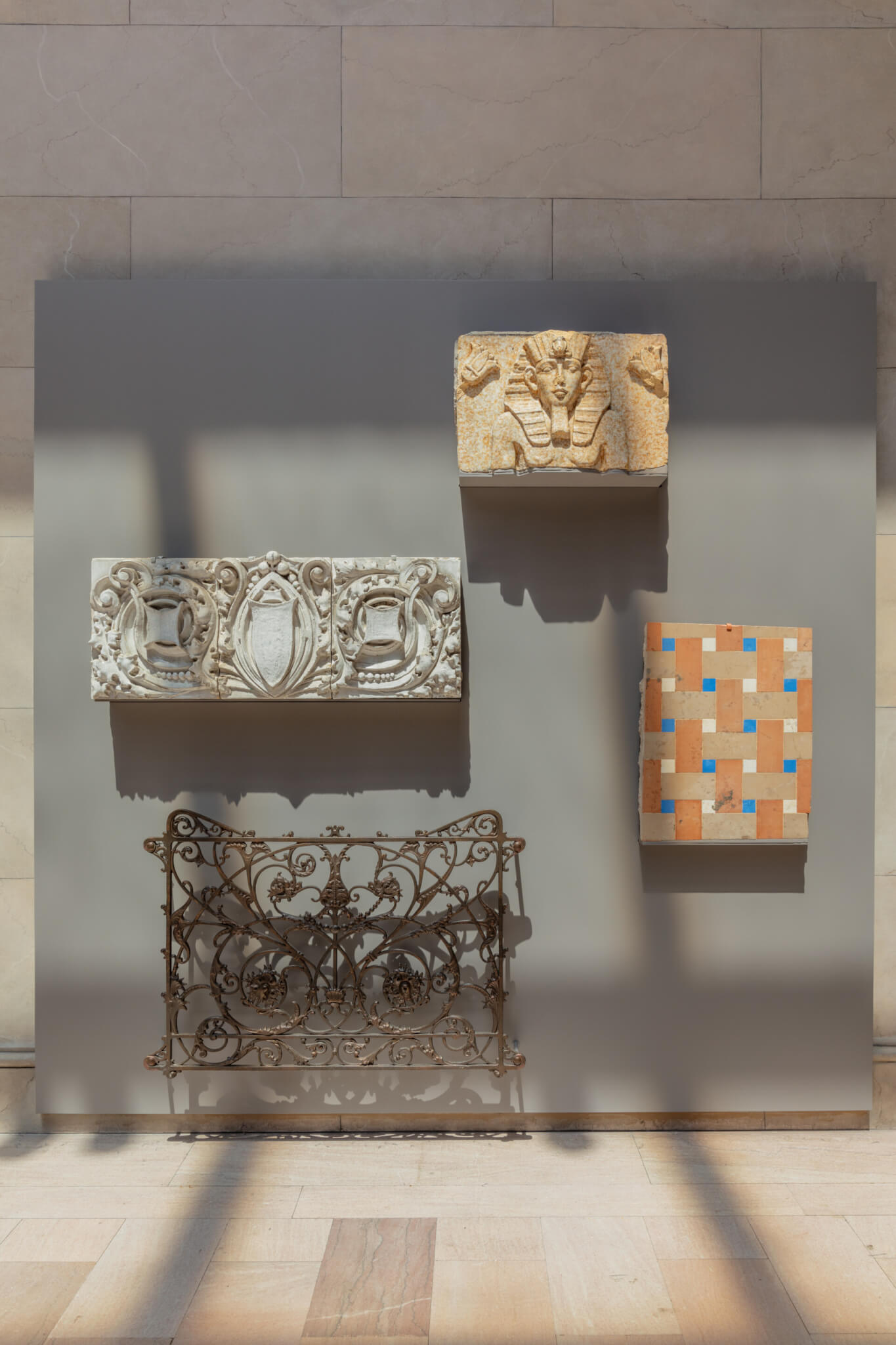
Floor tiles from Chicago’s Mecca Apartment Building, completed in 1892 by Franklin Pierce Burnham and Willoughy J. Edbrooke, are also on display. The Mecca Apartment Building was demolished in 1951. But at the Art Institute, its ornamentation is given a second chance.
Architectural Fragments From Chicago is on permanent display.








